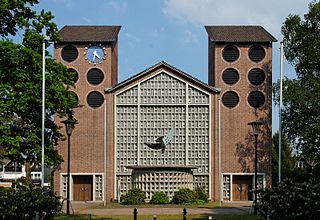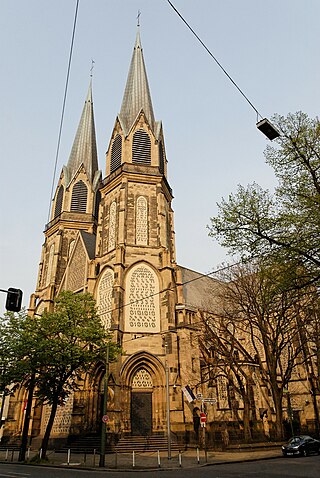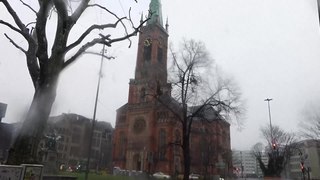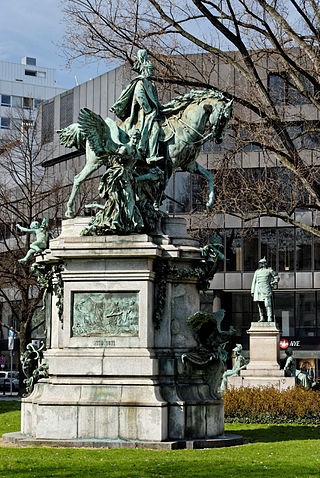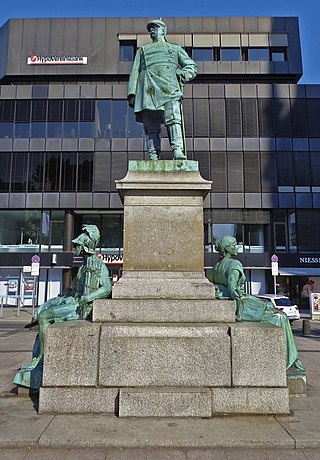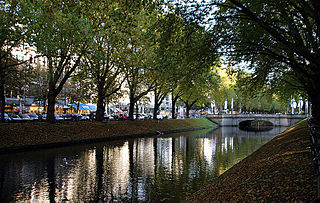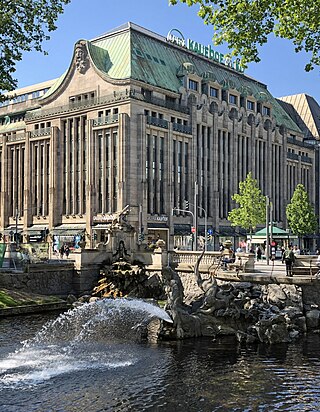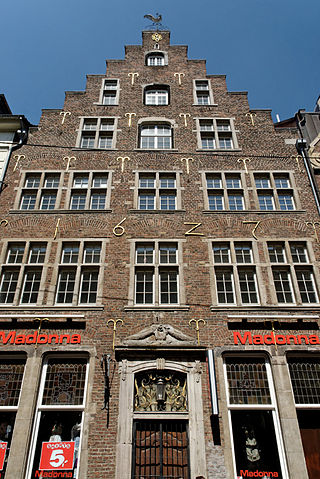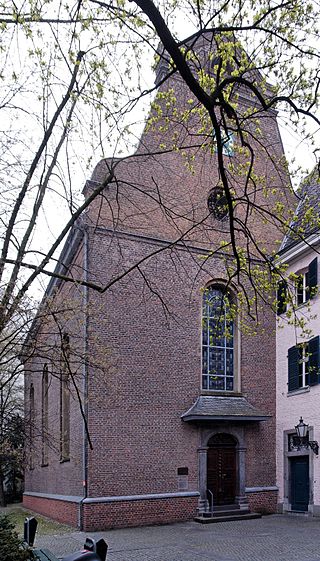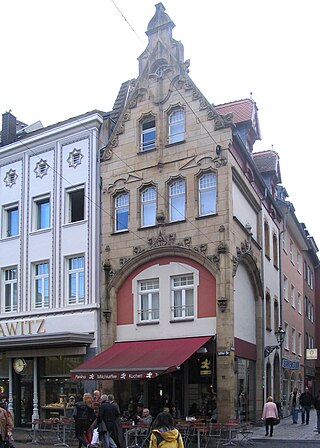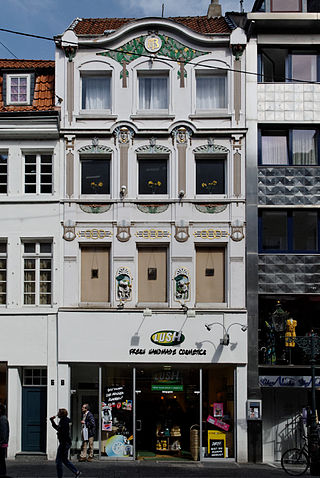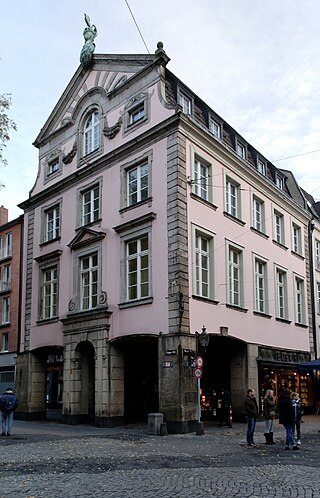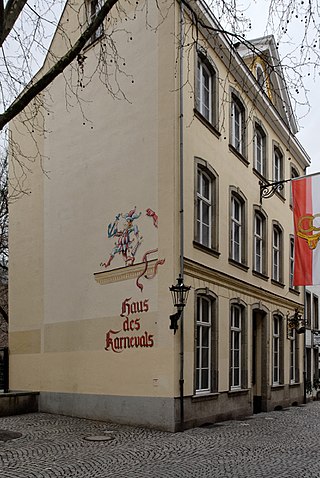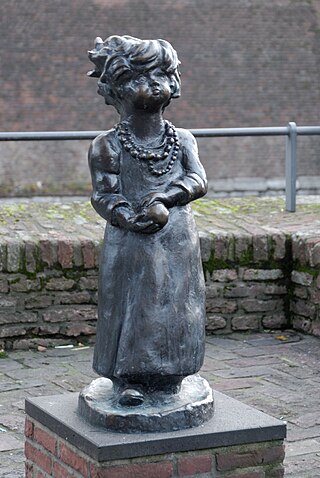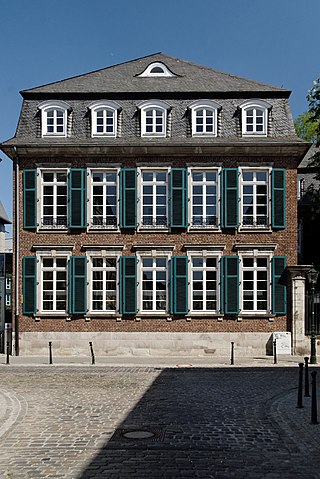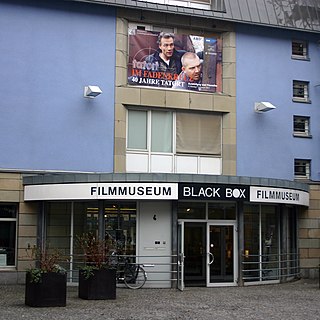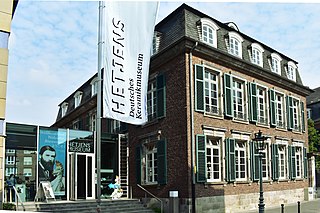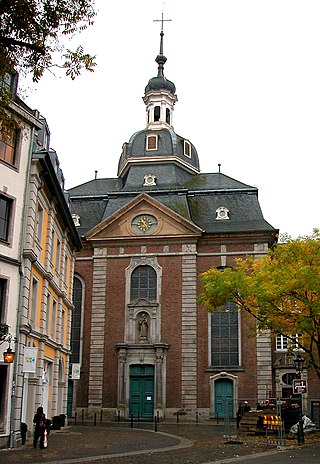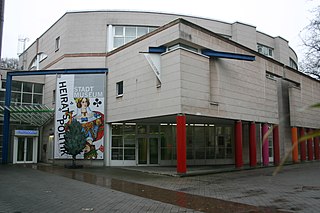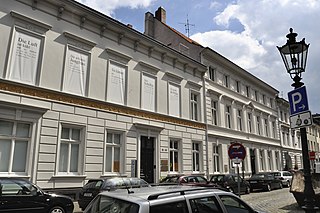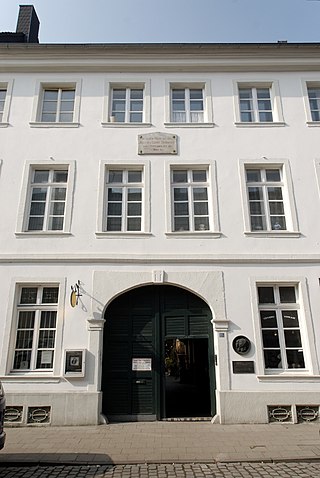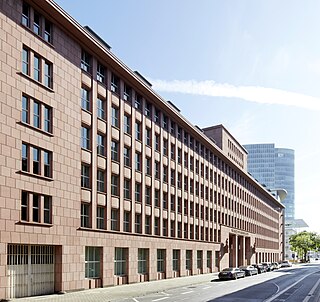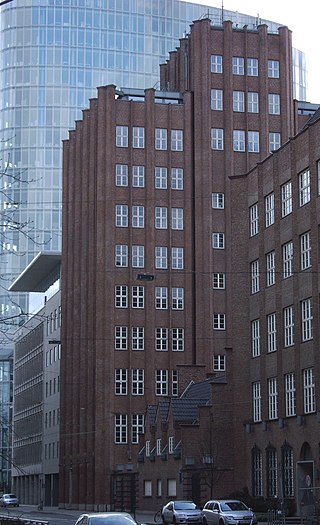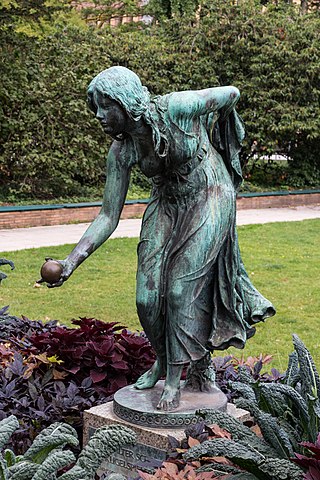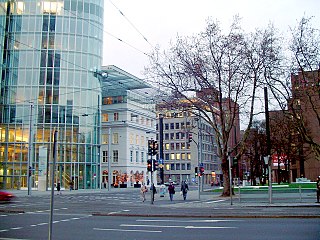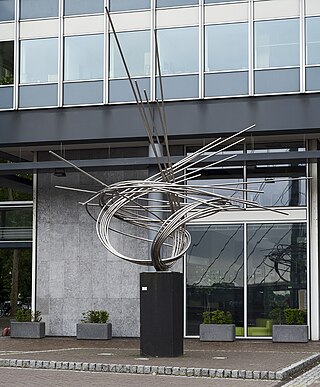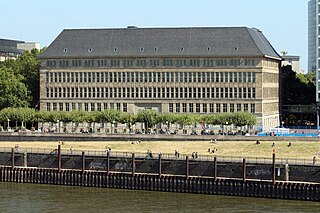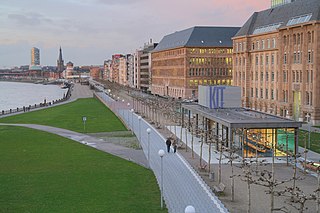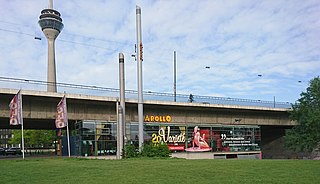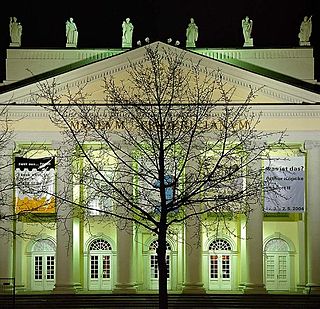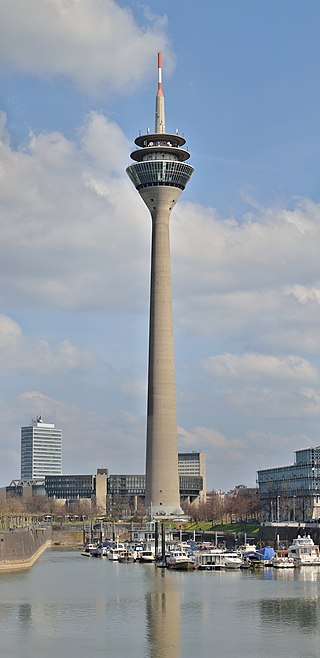Self-guided Sightseeing Tour #4 in Dusseldorf, Germany
Legend
Guided Free Walking Tours
Book free guided walking tours in Dusseldorf.
Guided Sightseeing Tours
Book guided sightseeing tours and activities in Dusseldorf.
Tour Facts
9.1 km
127 m
Experience Dusseldorf in Germany in a whole new way with our free self-guided sightseeing tour. This site not only offers you practical information and insider tips, but also a rich variety of activities and sights you shouldn't miss. Whether you love art and culture, want to explore historical sites or simply want to experience the vibrant atmosphere of a lively city - you'll find everything you need for your personal adventure here.
Activities in DusseldorfIndividual Sights in DusseldorfSight 1: St. Elisabeth
The Roman Catholic Church of St. Elisabeth, also known as St. Elisabeth's Church, is located on Vinzenzplatz in Düsseldorf-Stadtmitte and bears the patronage of St. Elisabeth of Thuringia. It is the only church in the city built into a row of houses and has been a listed building since 1983.
Sight 2: St. Mariä Empfängnis
The Roman Catholic Church of St. Mary's Immaculate Conception – also known as St. Mary's Church – was built between 1894 and 1896 according to plans by the Mainz cathedral master builder Ludwig Becker. It is located opposite the loop of Tonhallenstraße in Oststraße in Düsseldorf's city centre. The three-aisled basilica with the double-tower façade was designed in the cathedral style and is a typical example of Rhenish neo-Gothic. The parish belongs to the parish of St. Lambertus in the Düsseldorf city deanery of the Archdiocese of Cologne. In 2011, the merger with the old town community took place to form the parish of St. Lambertus.
Sight 3: Düsseldorfer Schauspielhaus
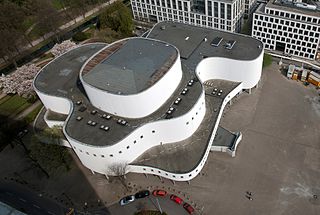
The Düsseldorfer Schauspielhaus is a theatre building and company in Düsseldorf. The present building with two major auditoria was designed by the architect Bernhard Pfau and built between 1965 and 1969. It opened in 1970.
Sight 4: Johanneskirche
St John's Church, with its almost 88 m high tower, is the largest Protestant church in Düsseldorf. It is located at the Martin-Luther-Platz. The church was built from 1875 to 1881 in the Romanesque Revival style. It was severely damaged in World War II, but was saved from destruction and in 1953 it was reopened. The last major remodeling took place in 2008. There is a cafe through which one enters the actual church.
Wikipedia: Johanneskirche, Düsseldorf (EN), Website, Heritage Website
Sight 5: Kaiser-Wilhelm-Denkmal
The Kaiser Wilhelm Monument in Düsseldorf is one of numerous Kaiser Wilhelm monuments that were erected during the German Empire and glorifies Wilhelm I as its "founder of the Empire" and as the victor over the Second Empire.
Wikipedia: Kaiser-Wilhelm-Denkmal (Düsseldorf) (DE), Heritage Website
Sight 6: Bismarck-Denkmal
The Bismarck Monument in Stadtmitte, Düsseldorf, is one of the numerous Bismarck monuments erected in the Kingdom of Prussia and later in the German Empire since 1868.
Sight 7: Königsallee
The Königsallee is an urban boulevard in Düsseldorf, state capital of North Rhine-Westphalia, Germany. The Königsallee is noted for both the landscaped canal that runs along its center, as well as for the fashion showrooms and luxury retail stores located along its sides.
Sight 8: Triton-Brunnen
The Triton Fountain was created by the Düsseldorf sculptor Friedrich Coubillier from 1898 to 1902 and acquired by the City Beautification Association for Düsseldorf's Königsallee. At the northern end of the avenue, the fountain functions as a point de vue and design conclusion to the canal axis of the city moat.
Sight 9: Wilhelm-Marx-Haus
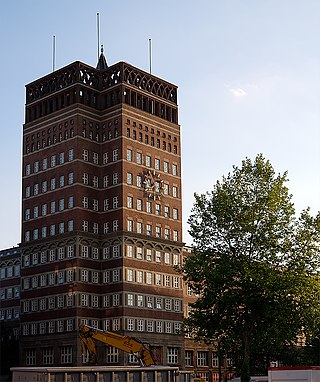
Wilhelm Marx House (Wilhelm-Marx-Haus) is a historical high-rise building in the central district of Düsseldorf in Germany. It was one of the first highrise buildings in Germany.
Sight 10: Haus zum Kurfürsten
The Haus zum Kurfürsten is located at Flinger Straße 36 in the Altstadt district of the North Rhine-Westphalian state capital Düsseldorf.
Sight 11: Berger Kirche
The Berger Kirche is a Protestant church from the 17th century in Düsseldorf's old town. It has been part of Diakonie Düsseldorf since 2003.
Wikipedia: Berger Kirche (Düsseldorf) (DE), Heritage Website
Sight 12: Schneidersches Geschäftshaus
The former Schneider office building in Düsseldorf's old town was built in 1896 or 1898 according to designs by the Düsseldorf architect Hermann vom Endt. On September 2, 1983, the corner house was placed under monument protection. On the ground floor of the building there is now a boutique.
Wikipedia: Schneidersches Geschäftshaus (DE), Heritage Website
Sight 13: Zum weißen Füchschen
The house at Flinger Straße 8 in Düsseldorf's old town is a listed building whose façade has Art Nouveau decoration.
Sight 14: Haus Goldener Helm
Haus Goldener Helm is located at Flinger Straße 1 at the corner of Berger Straße in the Altstadt district of the North Rhine-Westphalian state capital Düsseldorf. On November 10, 1983, it was entered in the city's list of monuments in the category of residential and settlement buildings in the Baroque subcategory.
Sight 15: Jan-Wellem-Denkmal
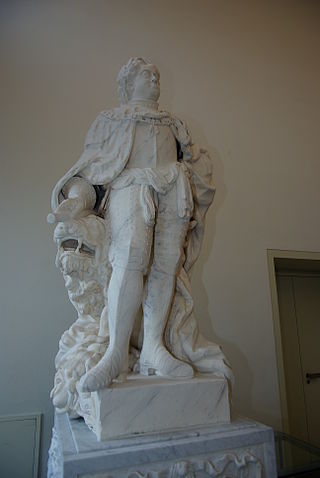
The Jan Wellem monument in Düsseldorf's town hall was completed by the sculptor Gabriel de Grupello after 1697/before 1708. The marble statue depicts Johann Wilhelm von Pfalz-Neuburg, called Jan Wellem, Elector Palatine and Duke of Jülich-Berg by the people of Düsseldorf, who spoke Lower Franconian at the time.
Wikipedia: Jan-Wellem-Denkmal (Düsseldorf) (DE), Heritage Website
Sight 16: En de Canon
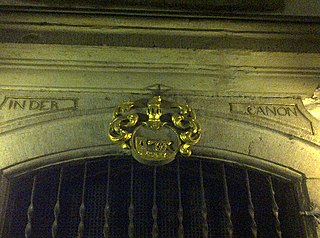
The Maurenbrecher are a Düsseldorf postmaster family that can be traced back to the 16th century and are among the pioneers of the postal system.
Sight 17: Haus des Karnevals
The House of Carnival is a historic building in Düsseldorf's old town at Zollstraße 9, which has housed a museum on the theme of Düsseldorf Carnival since 15 January 2005. The house also serves as the office of the Düsseldorf Carnival Committee and offers exhibitions on customs on three floors, where uniforms, medals, books and certificates as well as photos of over 60 years of Düsseldorf Carnival are shown. In the building, not far from the market square at the town hall, there is also a media archive in cooperation with the Westdeutscher Rundfunk with film footage of the Shrove Monday processions.
Sight 18: Ehra oder Kind mit Ball
Ehra or Child with Ball or Sinti Girl Ehra is a work of art by Otto Pankok.
Sight 19: Palais Nesselrode
The Palais Nesselrode at Schulstraße 4 and Hafenstraße 2 in Düsseldorf-Carlstadt is a historic city palace. The brick house, which was damaged in the Second World War and has two main floors and one floor in the mansard roof, has been rebuilt and now houses the Hetjens Museum. Its three-part complex, which consists of two pavilion-like wings connected by a narrow central section, is irregularly arranged around a small courtyard. Benrath Palace in the style of Rococo Classicism served as a model for the construction. The semi-detached house at Schulstraße 4 and Hafenstraße 2 formed the "only courtyard in Düsseldorf open to the street".
Sight 20: Filmmuseum
The Filmmuseum Düsseldorf is one of the few film museums in Germany. The exhibition rooms are located in the extension of the Hetjens Museum in Düsseldorf's old town.
Sight 21: Hetjens-Museum
Das Hetjens – Deutsches Keramikmuseum ist ein am 9. Mai 1909 gegründetes Düsseldorfer Museum für Keramikgeschichte. Aufgrund der bis zu 8000 Jahre alten und aus allen Teilen der Welt stammenden Stücke seiner Sammlung gilt es als das universellste Institut seiner Art und ist regelmäßig mit Leihgaben im In- und Ausland vertreten.
Sight 22: St. Maximilian
The Catholic Church of St. Maximilian, today usually called Maxkirche, in the Düsseldorf district of Carlstadt is a late Baroque church that emerged from a Franciscan monastery that was abolished in 1804. The monastery, whose living and utility rooms were located in the immediately adjacent Maxhaus, was founded in the 17th century, and the current church was built in the 18th century.
Wikipedia: Maxkirche (Düsseldorf) (DE), Website, Heritage Website
Sight 23: Stadtmuseum Düsseldorf
The Stadtmuseum Düsseldorf is a museum in Düsseldorf, North Rhine-Westphalia, Germany. It is housed in the Palais Spee in Carlstadt on the southern edge of the historic city centre.
Wikipedia: Stadtmuseum Landeshauptstadt Düsseldorf (DE), Website
Sight 24: Mariensäule
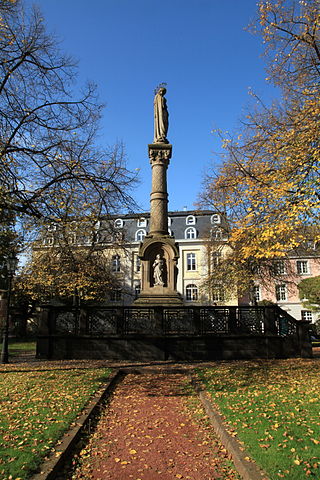
The Marian Column in the Düsseldorf district of Carlstadt is a neo-Romanesque column with a statue of Mary on its top. It stands on a pedestal in a small garden planted with roses and characterises the Maxplatz there.
Sight 25: Marionettentheater Düsseldorf
Düsseldorfer Marionetten-Theater is a marionette theatre in Düsseldorf, North Rhine-Westphalia, Germany.
Sight 26: Palais Wittgenstein
Palais Wittgenstein (Düsseldorf) is a theatre in Düsseldorf, North Rhine-Westphalia, Germany.
Wikipedia: Palais Wittgenstein (Düsseldorf) (EN), Heritage Website
Sight 27: Heinrich-Heine-Institut
The Heinrich Heine Institute is an institution for researching and presenting the life and work of the writer Heinrich Heine, based in Düsseldorf.
Sight 28: Robert Schumann-Haus
The Schumannhaus at Bilker Straße 15 in Düsseldorf's Carlstadt was the last joint residence of Robert and Clara Schumann and at the same time the only one in Germany that has been preserved in its historic structure. The building, built in 1795, housed the Schumann Memorial from 2003 to 2018 and, after renovation and new extension, has reopened as the Schumann Museum since 1 December 2023.
Sight 29: Walzstahlhaus
The Walzstahlhaus is a neoclassical office building with a red sandstone façade in Düsseldorf, Kasernenstraße 36. The six-storey building with a courtyard wing is located on the southwestern edge of the centre near the Rhine in the Carlstadt district.
Sight 30: Stummhaus
The Stummhaus at Breite Straße 67 to 69 in Düsseldorf was built on behalf of the Stumm Group by the Düsseldorfer Bürohausgesellschaft in the years 1922 to 1924 according to plans by Paul Bonatz in the materials and forms of Brick Expressionism. The building is considered a "prime example of Expressionism in architecture".
Sight 31: Die Kugelspielerin
The Ball Player is a sculpture by the sculptor Walter Schott and is considered his main work. It was built in Berlin between 1895 and 1897. A life-size bronze cast stands in the flower garden on Königsallee in Düsseldorf, other art casts are in Mannheim and Langen (Hesse), a copy in Berlin-Köpenick. A marble setting is preserved in the park of Gut Waltersdorf near Heideblick. In addition, there are a large number of statuettes of the figure, in bronze, chryselephantine and Meissen porcelain.
Sight 32: Graf-Adolf-Platz
Get Ticket*Graf-Adolf-Platz in Düsseldorf is one of the city's important transport hubs and used to be the starting point for long-distance travel.
Sight 33: Heinrich-Heine-Monument
A total of five monuments to Heinrich Heine in Düsseldorf have been erected over the years. There was a first attempt from 1887, but it did not come about in the course of a "monument dispute". In 1932 he wrote "Der aufstrebende Jüngling" by Georg Kolbe, and most recently in 2012 "Buch Heine" by Bert Gerresheim.
Sight 34: Mannesmann-Hochhaus
The Mannesmann high-rise is an administrative building on Mannesmannufer in Düsseldorf's Carlstadt district. It was designed and built between 1956 and 1958 by the architects Egon Eiermann and Paul Schneider-Esleben, after they had won an architectural competition in 1954. The original client was Mannesmann AG, which was taken over by Vodafone in 2000. Hochtief was involved in the construction as general contractor. Together with the Dreischeibenhaus, it is one of the first modern high-rise buildings in Germany. It stands for the time of the so-called economic miracle, in which private companies significantly changed the city skyline of Düsseldorf with high-rise buildings in the style of post-war modernism.
Sight 35: Große Mannesmann
The Große Mannesmann, also known as Mannesmann I or Movement, is a sculpture by the sculptor Norbert Kricke. It was created from 1958 onwards in the context of informal art as a commissioned work for Mannesmann AG and was erected in 1961 on its forecourt at the Mannesmann high-rise in Düsseldorf. Together with the high-rise, the property has been a listed building since 1997.
Sight 36: Mannesmann-Haus
The Mannesmann House, also known as the Behrensbau, is a former administrative building in Düsseldorf, Germany. It was built from 1911 to 1912 according to a design by the architect Peter Behrens for the headquarters of Mannesmannröhren-Werke AG and is one of the early large administrative buildings in Düsseldorf.
Sight 37: KIT - Kunst im Tunnel
Kunst im Tunnel or KIT is a contemporary art museum in Düsseldorf. It is the new exhibition space of Kunsthalle Düsseldorf, located within the Rheinufertunnel - hence the name. It has an underground exhibition area of 850m².
Sight 38: Villa Horion
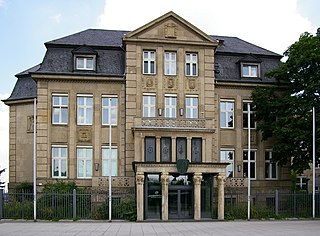
The Villa Horion on Johannes-Rau-Platz in Düsseldorf-Carlstadt was built at the same time as the neighbouring Landeshaus from 1909 to 1911 by the architect Hermann vom Endt in the Neoclassical style. The façade decoration, in particular two female relief figures, the "Fürsorge" and the "Landwirtschaft" were created by the sculptor Hermann Nolte. The listed building is located in the government district of the state capital. It is named after Johannes Horion, who resided here as governor of the Rhine Province. It currently houses the "House of Parliamentary History" of the North Rhine-Westphalian state parliament.
Sight 39: Apollo Varieté Theater
The Apollo Varieté is a variety theatre on the Rhine promenade in Düsseldorf in the immediate vicinity of the state parliament. The venue, which is run by Bernhard Paul and operated in the form of an event theatre, has been hosting music, theatre and variety events since it opened in 1997.
Sight 40: Eiche und Basaltsäule
7000 Oaks – City Forestation Instead of City Administration is a work of land art by the German artist Joseph Beuys. It was first publicly presented in 1982 at documenta 7.
Sight 41: Erinnerungsstelle an die Aktion Rheinland
Aktion Rheinland was an operation carried out by the Anti-Nazi resistance group in Düsseldorf led by Karl August Wiedenhofen. The goal was to surrender the city of Düsseldorf to the advancing Americans without any fighting, thereby preventing further destruction. The action occurred on 17 April 1945, during the latter stages of the encirclement of the Ruhr Pocket.
Sight 42: Rhine Tower
Join Free Tour*The Rheinturm is a 240.5-metre-high (789 ft) concrete telecommunications tower in Düsseldorf, capital of the federal state (Bundesland) of North Rhine-Westphalia, Germany. Construction commenced in 1979 and finished in 1981. The Rheinturm carries aerials for directional radio, FM and TV transmitters. It stands 172.5 metres high and houses a revolving restaurant and an observation deck at a height of 168 metres. It is the tallest building in Düsseldorf.
Share
How likely are you to recommend us?
Disclaimer Please be aware of your surroundings and do not enter private property. We are not liable for any damages that occur during the tours.
GPX-Download For navigation apps and GPS devices you can download the tour as a GPX file.
